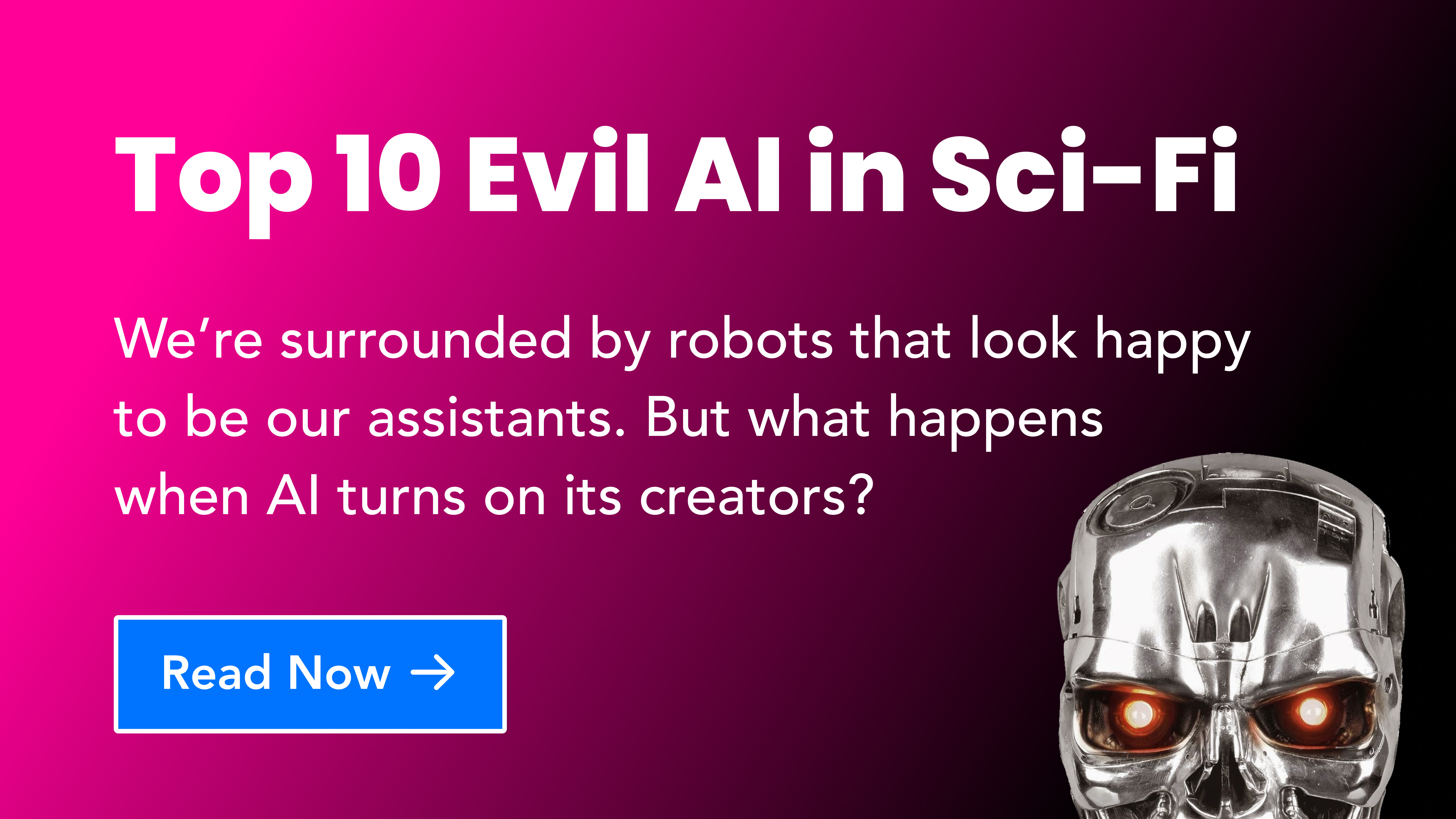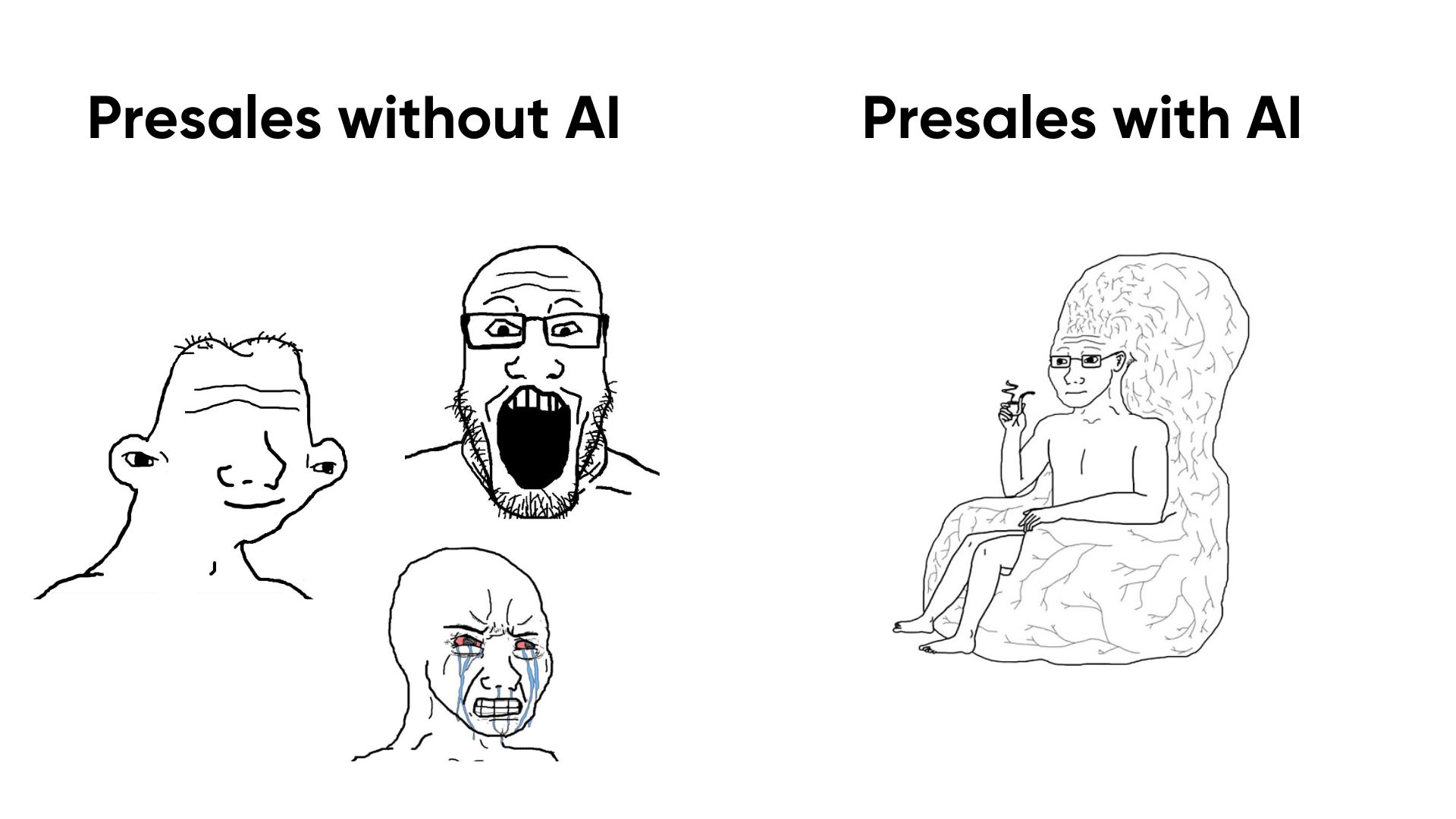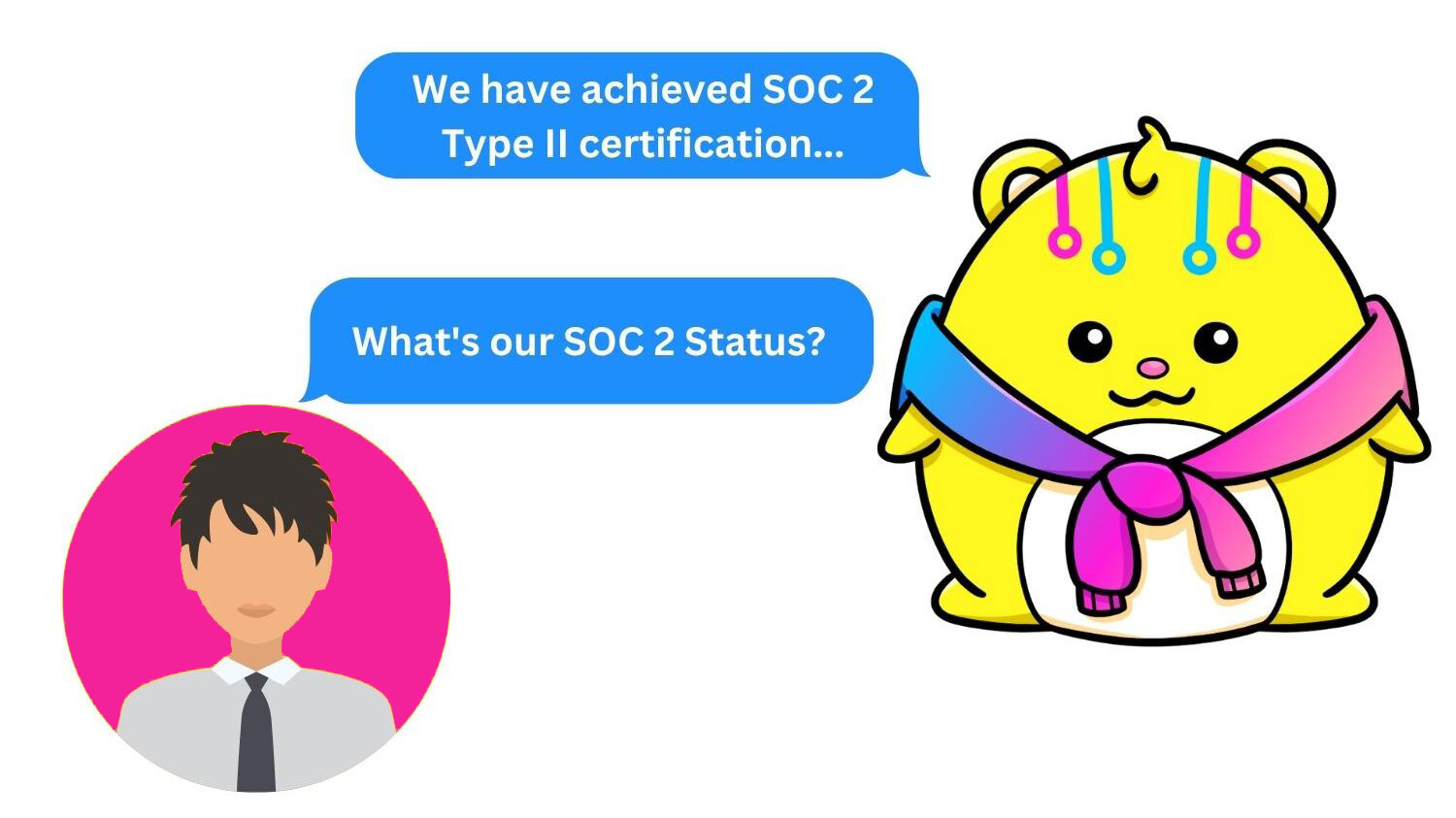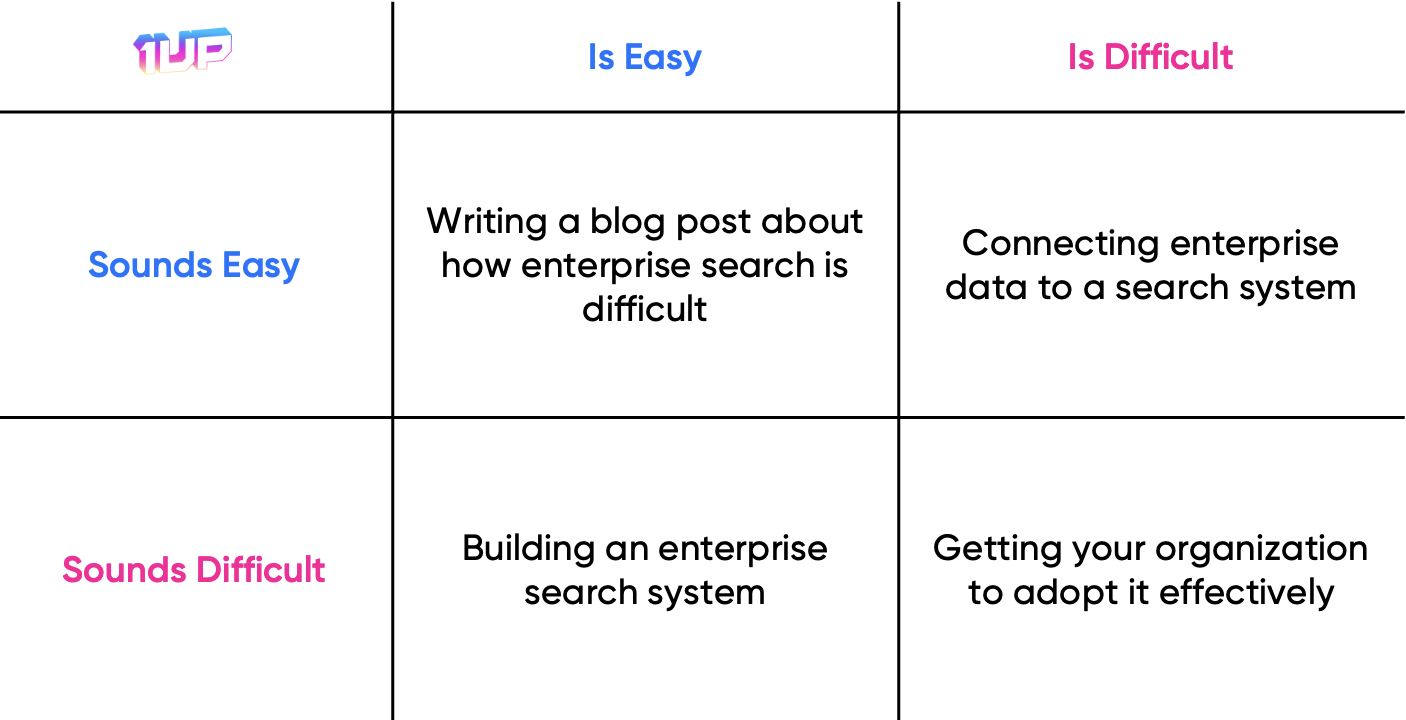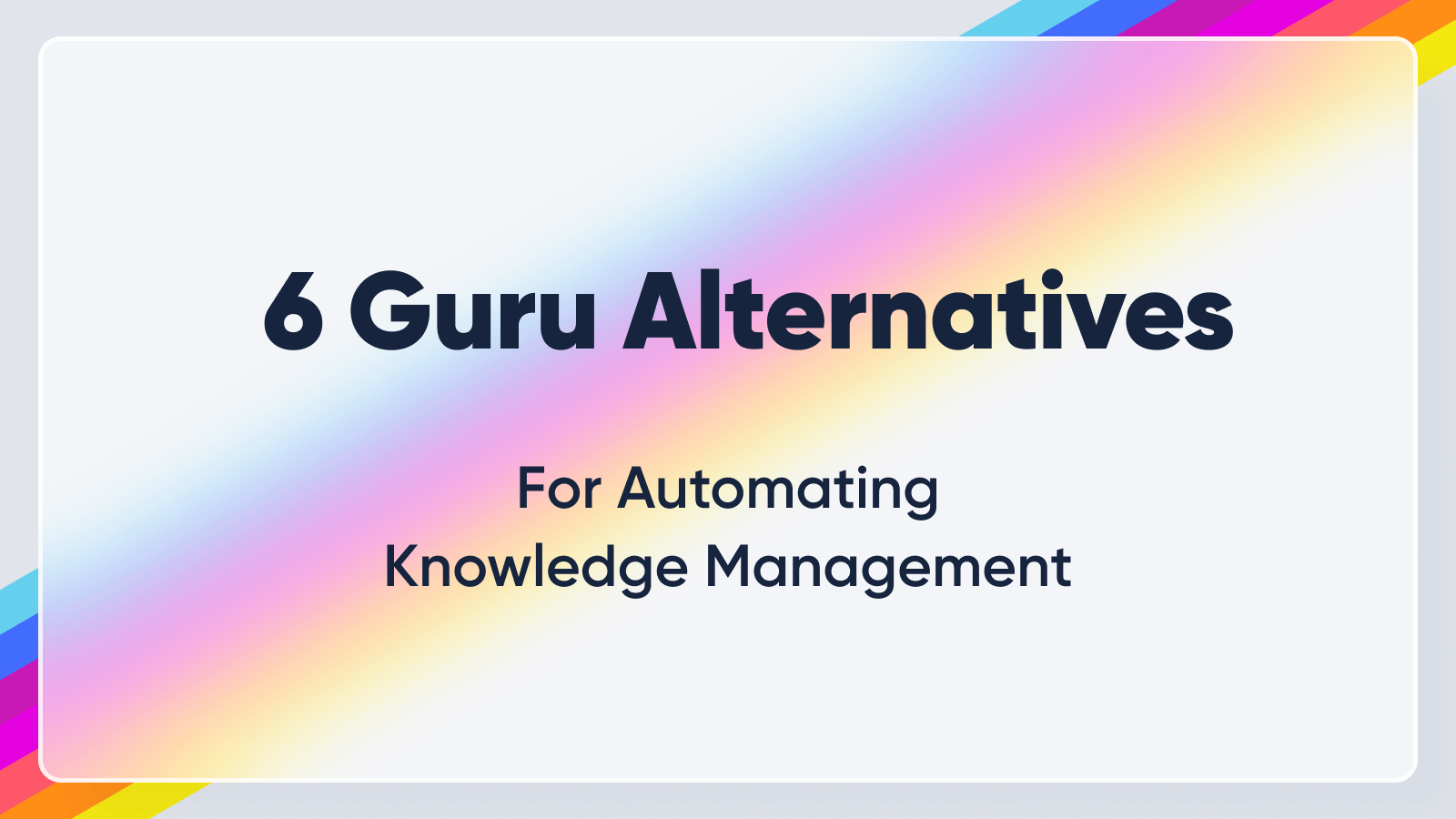Businesses face a growing information problem. No, not AI-generated spam.
The problem is that they have too much information.
Knowledge about products, process, and people. It’s all over the place. It’s constantly growing. And it can be difficult to find when you need it most.
Employees ask complex questions on a daily basis. Some questions can only be answered by humans. Others require intimate knowledge of a business’s products and processes. These are what we call un-Google-able questions:

Most of these queries fall into one of two categories:
- Questions that cannot be Googled or asked of an AI. These are not easily automated and almost always require a human to answer.
- Questions with answers buried deep in a company’s internal knowledge base. Employees are disincentivized from searching for these answers because it’s much easier to just
distractask a coworker.
In the old days, this content was stored in an intranet. Then came Knowledge management tools. Today, in [current year], we have an endless amount of Knowledge Base systems designed to help alleviate this issue. We use [current year] intentionally, because it doesn’t matter when you’re reading this – there’s going to be hundreds of tools in this space.
The problem is these tools didn’t really solve the information problem. Sure, a knowledge base allows you to organize data in a way that makes sense. But none of the previous approaches meaningfully improved the experience for enterprise knowledge workers.
What’s wrong with knowledge base systems today?
A knowledge base takes a ton of work to get off the ground
Existing knowledge management products can feel like a glorified Content Management System (CMS). They lack automation and mostly rely on a similar workflow:
- Create content.
- Upload your content to a knowledge base.
- Push it out to your organization.
- Hope that teammates can find and use your content when they need it.
Depending on the size of your team, steps 1-4 can take weeks or even months before value is realized.
But step 4 is by far the hardest part. Lack of adoption leads to user churn. And churn leads to the dark side.
A poor search experience = disappointment
KB search capabilities usually aren’t great. They heavily depend on an admin’s ability to make content that is readable by the knowledge management software.
That means you spend time sanitizing and modifying content to make it searchable. Search algorithms behind traditional Knowledge management products rely heavily on keyword frequency and well formatted documents.
For the admins, this need to curate and maintain a growing library of information can create more work than it actually solves. They need to become good at cleaning data.
For end-users, the poor search results can feel like a coin-flip. These folks need to become good at searching for information. That’s a tall ask, even for the best knowledge workers.
Users give up and revert to asking a human
When knowledge workers require information quickly, they default to asking a human. It’s easier to bother a colleague than it is to go looking for an answer. Sure, this leads to distractions that impact team efficiency, but who cares? Asking a teammate just “feels faster” than researching and digging through an internal knowledge base.
It’s like the enterprise equivalent of Let me Google that for you.
And for the people who do use the company Knowledge Base (KB), the experience of finding what they need can feel inadequate. Even the best KB can cause frustration if searches lead to poor results or require multiple attempts.

Reimagining the Enterprise Knowledge Base
The solution is always automation, isn’t it?
Knowledge Automation is a new way to quickly deliver intelligence across an organization by way of Large Language Models (LLMs).
This approach relies on LLMs to intake information, organize it, and generate answers to queries of varying complexity.
If you’re curious what that looks like, here’s a short demo:
The LLM-powered approach addresses the key pains of legacy knowledge management. Here are what we consider to be the key elements of a modern Enterprise KB:
- The setup process takes minutes, not weeks.
Documents no longer need to be sanitized, rewritten, or formatted in a specific way. Users simply connect PDFs, URLs, Spreadsheets, and other file types into the system. Information ingestion is automatic and easily refreshed without user intervention. - The search experience is excellent.
Using a combination of retrieval methods ensures that both content and context is utilized when searching the database. Documents are not just searched for, they are “understood” by the system. The end-user no longer needs to provide perfect search terms or structure their queries as they would for a Google keyword search. Instead, questions are asked in natural language, more similar to a ChatGPT prompt. - Admins no longer need to spend time sanitizing content.
This is probably the most glossed over element of what “good” knowledge automation looks like. An administrator does not need to spend time cleaning up documents before uploading them. The system should analyze the documents intuitively and automatically correct any formatting issues uncovered. Files and folders should be easy to sync, and web-based content should be regularly refreshed.
Finally, good enterprise knowledge automation should decrease the volume of coworker distractions. In this system, answers to complex questions are generated using multiple internal company sources in seconds, much faster than any human ever could.
One popular example we see is the automation of Sales Engineering answers like this:

It could take an experienced Sales Engineer several minutes of digging through documentation to find this answer. That’s much too long to do during an important customer call. In this example, 1up is providing an answer in a fraction of the time.
Here’s another example from the perspective of a Business Development Representative (BDR). This example falls more into the category of automating sales enablement and significantly shortens the time spent looking for a specific document.

The best sales reps don’t want to wast time digging for content and talking points. They want that information to be readily available at the push of a button. An automated approach to knowledge helps them retrieve what they need, when they need it most.
Another new use case we’re seeing focuses on automating security questionnaires:
In this example, 1up is actually parsing a document containing multiple questions. Sales and IT teams spend hours manually completing these documents, often a mandatory part of the vendor review process.
The ability to complete painful questionnaires has significantly accelerated the sales cycle, and is just another example of how knowledge automation is impacting day-to-day workflows in ways legacy tooling never could.
It’s [current year] and Large Language Models (LLMs) have opened up a world of possibilities. Automating the retrieval of knowledge is just one exciting use of this technology. The ability to automate answers to complex questions can unlock a whole new level of productivity for technical sales teams.
Want to experience it for yourself? Try 1up for free.
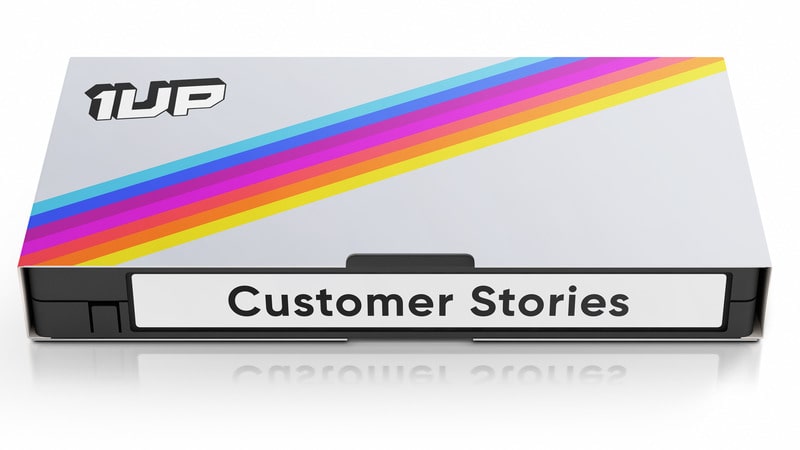

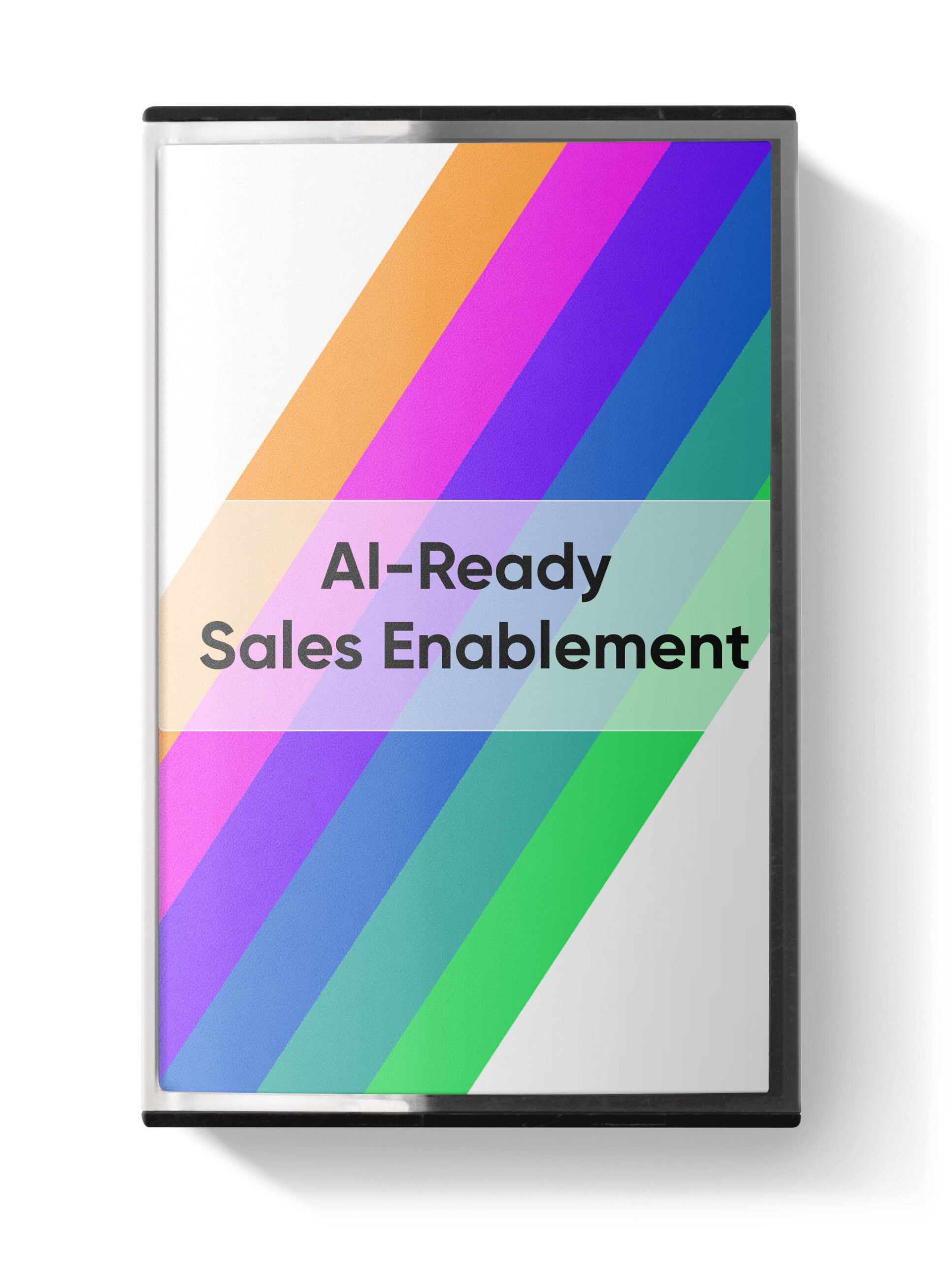
 Instagram
Instagram 

